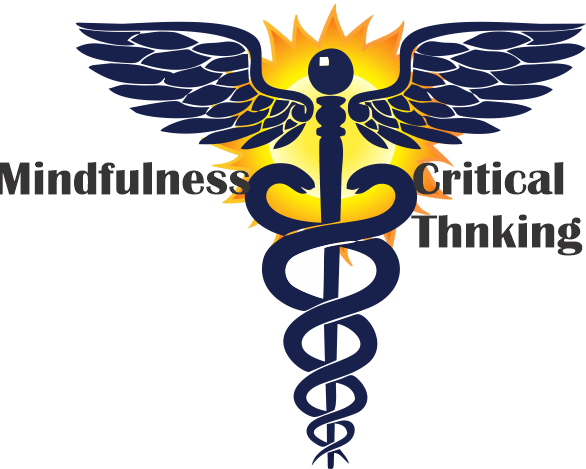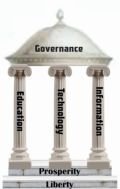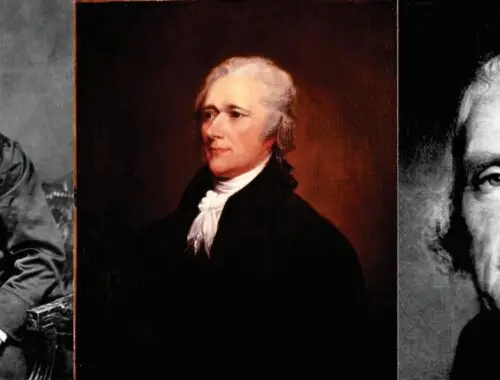
Part 5—Cutting the Puppet Masters’ Strings
Abstract: Critical thinking and mindfulness are the two-fold path to citizen resiliency and independence from media induced memes.
“A lie doesn’t become truth, wrong doesn’t become right and evil doesn’t become good just because it’s accepted by a majority.” — Booker T. Washington
“The beginning of wisdom is to call things by their proper name” — Confucius
Jonathan Turley used the Confucius quote in his article about the Capital incident. I’m potentially guilty as well using the term “incident”. The left calls it insurrection, and the right calls it, well, something else. Turley’s point is the term we use shapes our thoughts and impressions. This reminds me of the mantra from a small group instructor at the Infantry Officers’ Advanced Course to “use precise terms precisely”. The media and education increasingly blur terms and often deliberately used terms to incite or mitigate whether they are appropriate. Their goal is to indoctrinate and manipulate. Words matter—they shape the way we think. See “Words Do Matter: Archimedes vs. Atlas?”.
The twin institutional problems of education and the media reinforce each other. The media promote ineffective approaches to education that do not stem the continued decline in academic achievement and capability. Education does not teach the critical thinking skills that will help citizens to cut through the media’s miasma and make informed decisions.
In his first Inaugural Address, Jefferson stated, “…error of opinion may be tolerated where reason is left free to combat it” by “the diffusion of information and arraignment of all abuses at the bar of the public reason”. This referred to some issues in the Adam’s administration and opinions in the Constitutional debates and the press during the two Washington administrations. It is not new, but Jefferson gives us the key: reason must combat it.
The Two-fold Response
The two-fold response is mindfulness and critical thinking. They must work together. If one is not mindful, then he or she will engage in critical thinking on an episodic rather than systemic basis. Critical thinking is the key to decode the media’s messaging and blunt or reshape its power. One must be consciously aware of the now to engage in critical thinking. On one hand, this is simple and straightforward and, on the other, very complex. It is complex because most of us do not engage in mindfulness and lapse often into subconscious action. It is simple because most people can readily grasp the basics of critical thinking and employ it. You do not need to have an enormous IQ for critical thinking, but you need common sense.
Mindfulness
There are many sites on the web defining and discussing mindfulness. For example, a Berkley site defines mindfulness as:
Mindfulness means maintaining a moment-by-moment awareness of our thoughts, feelings, bodily sensations, and surrounding environment, through a gentle, nurturing lens.
Mindfulness also involves acceptance, meaning that we pay attention to our thoughts and feelings without judging them—without believing, for instance, that there’s a “right” or “wrong” way to think or feel in a given moment. When we practice mindfulness, our thoughts tune into what we’re sensing in the present moment rather than rehashing the past or imagining the future.
For our purpose, the key aspect is the moment-by-moment awareness. It also mentions a lack of judgment. Many other sites also mention the lack of judgment. On the surface that seems counter to critical thinking, but I’m not sure it is. If we look back to its roots in Buddhism, the goal is not periodic meditation the way some sites discuss, but a continuous awareness—better said consciousness—of what is going on around you and recognizing it.
How many of do something and when asked why, we shake our head and say, “I don’t know”. This mindset is what we want to avoid. We want to be aware of what we are doing and why. When we don’t, the subconscious mind lets our cognitive biases to run rampant. We want to be aware of when we invoke these cognitive biases and then use critical thinking to challenge our cognitive biases and judge.
Perhaps we depart from mindfulness when we judge, but I am not sure that is true. What we do not want to do is lose our passions. I suspect that is the issue with judgment and mindfulness. We want to calmly and reasonably assess the situation while retaining control of our passions. When we lose control of our passions and we invite cognitive bias into our thoughts. The effects are even more significant when we do it subconsciously.
When we do this, we may not even judge per se, but simply understand. Trying to do this every waking moment is a hard task, if not impossible. But we can be mindful while engaging the media and during key events. The techniques taught in mindfulness can help.
Critical Thinking
Critical thinking is the inoculation for the viral meme. Critical thinking helps a person to think through issues and ask the right questions before the meme takes root. The lead figure shows a jester, a hermit, and a series of questions. The questions are the key. They are common sense and do not require a huge IQ to consider, but they require an open mind, at least aware of cognitive bias.
Legend has it that the Court Jester was often the only one who could tell the king the truth at a medieval court. The Jester used humor to point out key issues and perhaps solutions and to peel away the layers of complexity and obscurity to get to the actual truth within the layers. The jester represents our conscious mind as it looks at System 2 based thinking. The hermit represents our subconscious mind doing System 2 thinking. See Part 3a of the Judgment and Policy series for System 1 and System 2 thinking.
Our task in critical thinking is to bring the truth out of the chaos. Our primary tools are logic and reason to employ analysis and synthesis. I am not sure how much time schools spend teaching logic and reason anymore. When I was a Plebe at West Point, we did not take English. Rather, we took Logic and Composition. The course was as much about understanding and learning how to employ logic as it was about writing. Likewise, our mandatory philosophy class taught elements of logic and reason. These were classes all my classmates took, regardless of whether we concentrated in Engineering, Physics, of Psychology. West Point understood that a leader who makes key decisions must understand logic and reason and be able to employ them effectively. Today’s leaders, who may not have had the benefits of a classical education that included logic and reason, must build these skills on their own. Fortunately, there are many sites on the Internet that provide tutorials on logic, but the emerging leader must take the personal time to find and use them.
The figure above gives a shortcut to many of these skills through questions and symbols. Symbols are evocative of the meanings encoded into them. Mentally calling up a symbol can trigger the coded meaning and action. For example, training the mind to engage critical thinking via the jester symbol and to think through hidden layers of meaning through the hermit symbol can place us in a state of mindfulness to allow reflection and assessment.
The jester also enjoins us to think through assumptions and biases and separate them from facts and preconceptions. The jester also alerts us to the power of emotions and cautions us to not allow our passions to overwhelm logic and reasons.
The hermit asks questions:
- Why is this happening? What are the root causes and sources?
- Cui bono, who benefits? With the points raised and the conclusions drawn in a media message, who benefits? It may not always be the most obvious, and the hermit asks us to dig deeper into second and third-order effects.
- Aurelia Mediocritas, what is the golden mean? How do the facts fit together to determine the most beneficial course of action?
- Ceteris paribus, all things being equal, what happens as one or more variables change? What are the independent and the dependent variables?
The quest for truth requires judgment based on facts, and an understanding of assumptions, underlying biases, pre-conceptions, and emotions. It often a matter of choosing the optimal point, or “golden” mean between two extremes. Finding the golden mean also requires judgment to understand the poles and to find root issues that can hide in a labyrinth of competing ideas and data.
Bringing it Together
 Exercising mindfulness and critical thinking do not come easy. It requires discipline and training. But when we teach them together, they reinforce each other, much like the serpents twining around the winged staff of the caudices. When we bring them together with the power of intellect, understanding, and wisdom, they can provide illumination to difficult problems and cast light upon solutions. Mindfulness alerts the mind to the issues and potential cognitive biases and hidden assumptions and critical thinking asks the right questions to uncover them, to see how they relate, and to develop solutions.
Exercising mindfulness and critical thinking do not come easy. It requires discipline and training. But when we teach them together, they reinforce each other, much like the serpents twining around the winged staff of the caudices. When we bring them together with the power of intellect, understanding, and wisdom, they can provide illumination to difficult problems and cast light upon solutions. Mindfulness alerts the mind to the issues and potential cognitive biases and hidden assumptions and critical thinking asks the right questions to uncover them, to see how they relate, and to develop solutions.
The next part of this series of articles will apply the concepts of critical thinking and mindfulness to resiliency.
Series Flow
Part 1: Introduction
Part 2-Lessons of Mann Gulch: Institution Failures and Limits of Sensegiving
Part 3—The Failure of the Educational Institution: Siloes, Stovepipes, Stovepipes and Indoctrination
Part 4—The Failure of the Media Institution: Yellow Journalism and Sensegiving Masquerading as Factual Reporting
Part 5—Cutting the Puppet Masters’ Strings
Part 6—Developing Resilience
Part 7—Center for Citizen Resiliency





